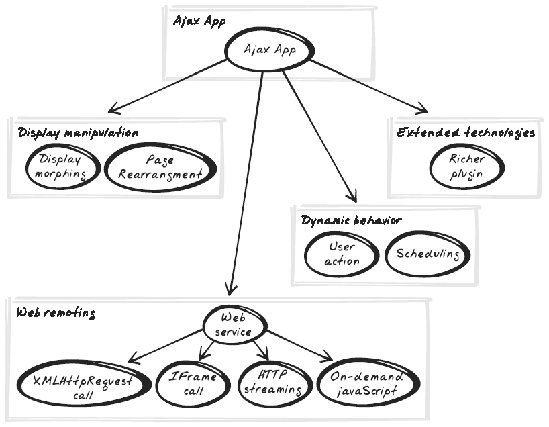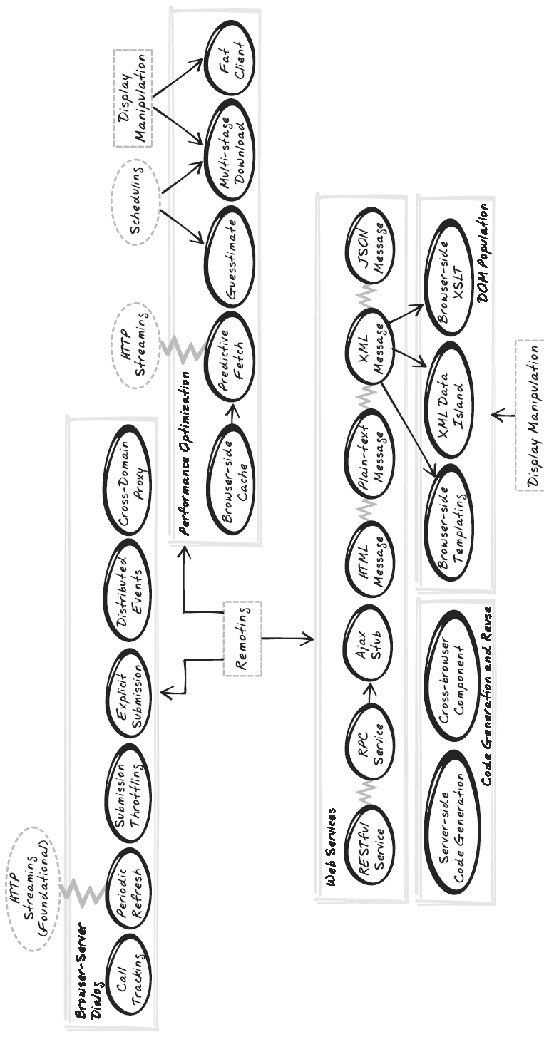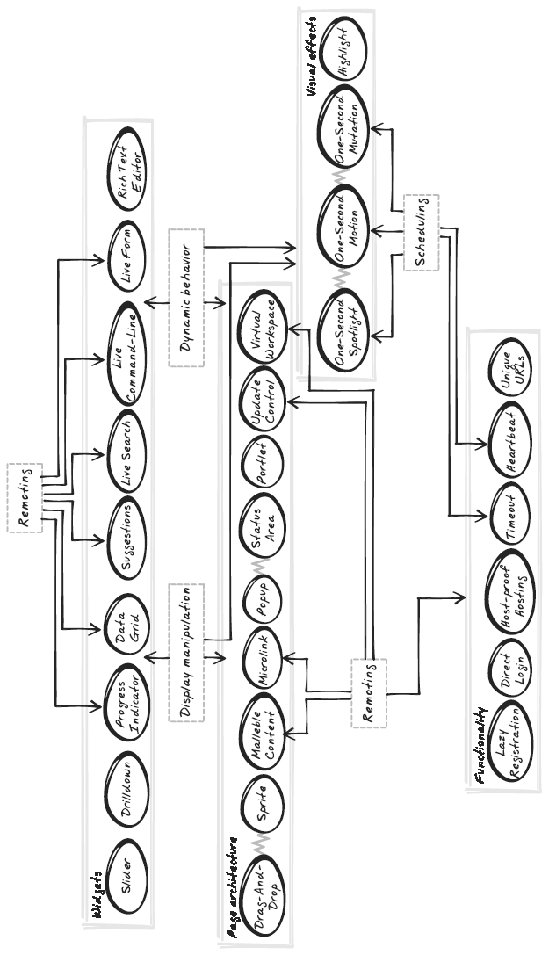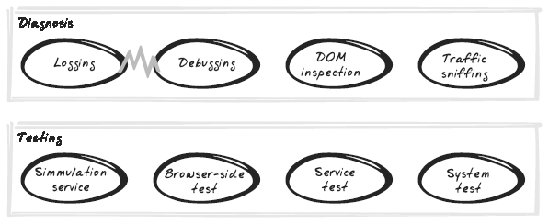Section 3.3. Ajax Patterns Overview
3.3. Ajax Patterns OverviewThe Ajax Patterns show how people have used the design principles effectively in real-world Ajax applications. It might seem funny that we can have so many patterns about Ajax, a term that was coined only a few months before work on these patterns began. However, the ideas are not new; there were many Ajax features on the Web before the term came about to describe them. The healthy Net economy has helped a lot too, with hundreds of new sites now using Ajax, along with powerful tools (RSS, Technorati, Google, and wikis) to locate them as soon as they're available. With over 60 patterns, it's useful to classify the patterns hierarchically. At a high level, the book is divided into four parts, each corresponding to a different focus areaFoundational Technology, Programming, Functionality and Usability, and Development. Beyond that, each part is divided into several chapters, where each chapter includes related patterns. For instance, Foundational Technology Patterns (Part II), includes Web Remoting (Chapter 6), which includes several patterns for web remoting. Here's a summary of each part:
Figure 3-1 shows where the four parts sit in the context of an Ajax application. Most patternsthose in the first three partsare about the product, while the remaining part, Development patterns, is about the process. Of the product-oriented patterns, the Foundational Technologies explain how to use the crude web technologies such as XMLHttpRequest and the DOM. At a medium level are the Programming patterns, guiding on strategies to use these technologies. At a high level are the Functionality and Usability patterns. Overall, the Foundational Technology patterns are at the core of the Ajax Patterns language; the remaining three parts all build on these, and are fairly independent from one other. Figure 3-1. Ajax Patterns: four parts On the inside covers of this book, you'll find an alphabetically ordered reference of all the patterns, providing summaries and page numbers. The introduction to each part of the book and to each chapter also contains some summary information. In addition, the following pages contain pattern maps for each of the four high-level groupsFoundational Technologies, Programming, Functionality and Usability, and Development. The diagrams in Figures 3-2 through 3-5 follow these conventions. Figure 3-2. Foundational Technology patterns Figure 3-3. Programming patterns Figure 3-4. Functionality and Usability patterns Figure 3-5. Development patterns
|